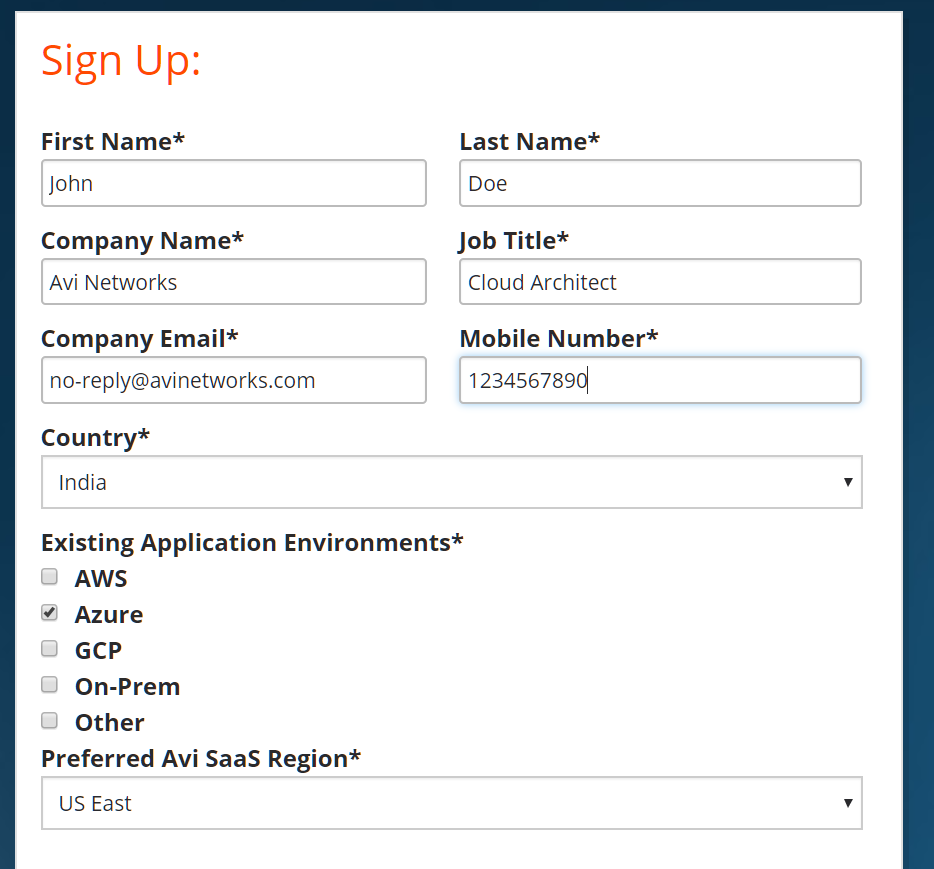The NSX Advanced Load Balancer SaaS complements the flagship NSX Advanced Load Balancer Platform, as the cloud-hosted option to deliver application services including distributed load balancing, web application firewall, global server load balancing (GSLB), network and application performance management across a multi-cloud environment. It helps ensure fast time-to-value, operational simplicity, and deployment flexibility in a highly secure manner.
NSX Advanced Load Balancer Architecture
The NSX Advanced Load Balancer architecture comprises two key components:
The Controller
The NSX Advanced Load Balancer Controller is the control plane for the NSX Advanced Load Balancer solution. It provides a single point of management and operations, including configuration, visibility, analytics, and metrics. It uses big data analytics to analyze the data and present actionable insights to administrators on intuitive dashboards.
The Service Engines
The NSX Advanced Load Balancer Service Engines (SEs) are the data-plane component. SEs collect real-time application analytics from traffic flows between end users and applications. The SEs are high-performance data-plane entities which perform the actual load balancing (LB) and web application firewall (WAF) functions. All configurations for a given SE are managed by the respective Controller Cluster.

For more information on the NSX Advanced Load Balancer Architecture, see the Load Balancing topic in the VMware NSX Advanced Load Balancer Configuration Guide.
Introduction to NSX Advanced Load Balancer SaaS
Prior to the introduction of NSX Advanced Load Balancer SaaS, Controllers and Service Engines would be deployed in the customer environment. With the advent of NSX Advanced Load Balancer SaaS, an additional operational model is offered, control plane as a service. With NSX Advanced Load Balancer SaaS, the NSX Advanced Load Balancer hosts and operates the control plane. Service Engines (the data plane) continue to reside in the customer environment (on-premises or in a public cloud). The following diagram depicts a Controller managed by NSX Advanced Load Balancer.

The salient features are listed below:
NSX Advanced Load Balancer-managed control plane, available as a service.
Instantaneous on-boarding: NSX Advanced Load Balancer Controller deployed in minutes.
The NSX Advanced Load Balancer provides continuous monitoring, configuration backups, software upgrades and patches, security alerts, and performance tune-ups
Proactive support
Multi-cloud solutions — data plane can be on-premises or in a public cloud.
Requirements for Connectivity to NSX Advanced Load Balancer SaaS
The following considerations are important while connecting your environment to NSX Advanced Load Balancer SaaS.
- Case 1: No additional connectivity requirements from NSX Advanced Load Balancer SaaS to customer environment
-
In this scenario, NSX Advanced Load Balancer SaaS communicates with public API endpoints for respective Infrastructure as a service (IaaS) cloud infrastructure where the customer workloads are provisioned. This works automatically, with no additional configuration or access policy requirement. The NSX Advanced Load Balancer SaaS supports the following cloud types in this mode:
Amazon Web Services
Microsoft Azure
OpenStack with public URLs (for example, Platform 9)
In addition, the NSX Advanced Load Balancer SaaS can work with no-orchestrator clouds. In this case, SE provisioning is done by the customer manually (or with the help of automation tools such as Ansible or Terraform). NSX Advanced Load Balancer SaaS does not require inbound access to the customer virtualization infrastructure. The cloud types supported in this mode are:
Linux Server Cloud
No-orchestrator clouds (for example, VMware read access)
- Case 2: NSX Advanced Load Balancer SaaS requires connectivity to customer’s orchestration environment
-
In this scenario, the NSX Advanced Load Balancer SaaS communicates with the infrastructure typically residing in a private network. Once NSX Advanced Load Balancer SaaS is allowed to communicate with the virtualization infrastructure, it can communicate continuously with the virtualization orchestrator and provide fully automated provisioning. The NSX Advanced Load Balancer SaaS supports the following cloud types in this mode:
VMware write access
OpenStack hosted on-premises
VMware read and write access
Note:In both Case 1 and 2 above, the Service Engines need to communicate with NSX Advanced Load Balancer SaaS. This might require allowing communication between the NSX Advanced Load Balancer Service Engines and the Controller IPs, over secure communication channels such as HTTPS and SSH.
Linux Server Cloud can function in either of the modes above.
Deploying NSX Advanced Load Balancer SaaS
This section lists the process for deploying the NSX Advanced Load Balancer Platform with the NSX Advanced Load Balancer SaaS operational model. The full deployment process is divided into three steps:
Registering for NSX Advanced Load Balancer SaaS
Connecting NSX Advanced Load Balancer SaaS to your cloud
Configuring application delivery features
Registering for NSX Advanced Load Balancer SaaS
To sign up for NSX Advanced Load Balancer SaaS, navigate to https://info.avinetworks.com/saas and register.

An NSX Advanced Load Balancer representative will contact you and provide a URL through which to connect. Log in to create an NSX Advanced Load Balancer account.
Once the previous step completed, you will be provided with a login ID and the URL with which you can access NSX Advanced Load Balancer SaaS.
Connecting Your Cloud to NSX Advanced Load Balancer SaaS
In this section, NSX Advanced Load Balancer SaaS is configured to integrate with the network infrastructure where your applications are hosted (and where the NSX Advanced Load Balancer Service Engines will be provisioned).
Depending on the cloud type, please refer to the respective document mentioned below:
Cloud Type |
Documentation |
|---|---|
Microsoft Azure |
See Installing NSX Advanced Load Balancer in Microsoft Azure topic in the VMware NSX Advanced Load BalancerInstallation Guide. |
Amazon Web Service |
See Installing NSX Advanced Load Balancer in Amazon Web Services topic in the VMware NSX Advanced Load BalancerInstallation Guide. |
Linux server cloud |
See Considerations for Deploying NSX Advanced Load Balancer in Linux Server Cloud topic in the VMware NSX Advanced Load BalancerInstallation Guide. |
Configuring Application Delivery Features
Once the cloud is integrated with NSX Advanced Load Balancer SaaS, you can get started with creating your first virtual service. For more information, see Create a Virtual Service topic in the VMware NSX Advanced Load Balancer Configuration Guide.